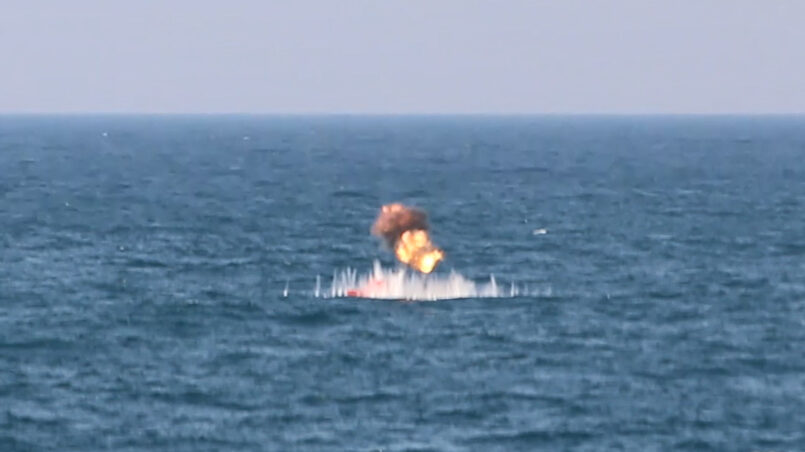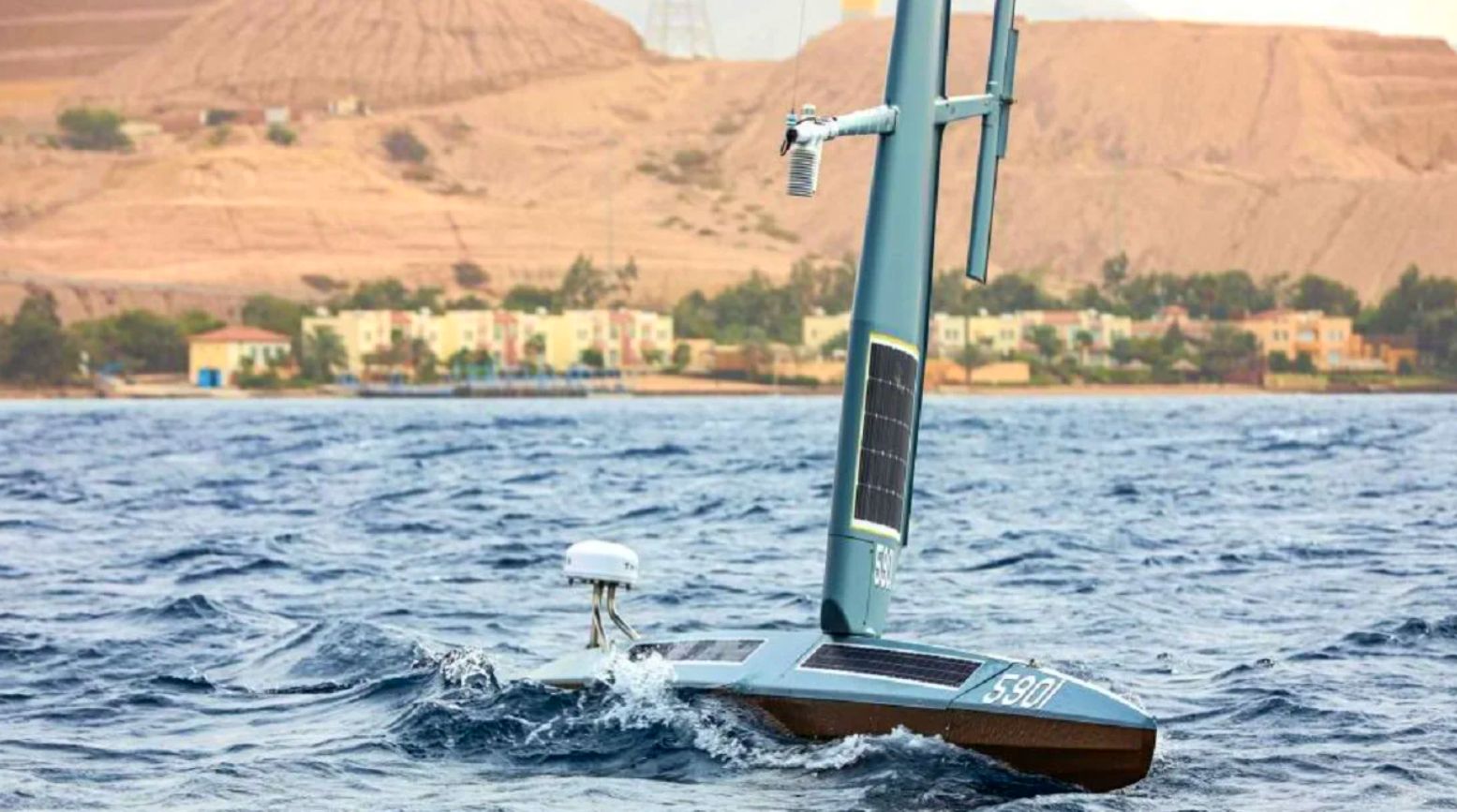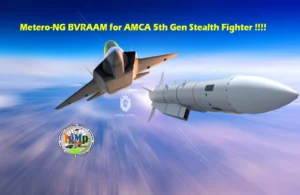The US Navy announced that it fired live ammunition from unmanned surface vessels (USVs) as part of Exercise Digital Talon at a time when tensions are running high in the Middle Eastern region triggered by the recent spate of hostilities in Gaza.
After Israel & Ukraine, Kazakhstan Emerges As The New Battleground Between West And Russia & China
US Naval Forces Central Command (NAVCENT) announced on November 2 that the live-fire drills were conducted on October 23. The message given by the US Navy is that of deterrence.
This may be significant as several US military facilities in the region, especially in Iraq and Syria, have come under attack by drones allegedly deployed by Iran-backed regional militias.
These militant groups have almost unanimously pledged support to Gaza and urged Israel to stop the air strikes that have reduced the densely populated enclave to rubble and caused thousands of casualties.
NAVCENT’s announcement said that the fleet’s Task Force 59, the first unmanned task force, “demonstrated the ability of unmanned platforms to pair with traditionally crewed ships in ‘manned-unmanned teaming’ to identify and target simulated hostile troops at sea.
The hostile forces were represented through the use of a target boat. Then, using live munitions launched from another unmanned platform, NAVCENT forces engaged and destroyed the targets.”
A human operator ashore in Bahrain at Task Force 59’s Robotics Operations Center made the engagement decisions, according to the statement. At the same time, the Lethal Miniature Aerial Missile System aboard the unmanned surface vehicle MARTAC T38 Devil Ray USV successfully scored many direct hits.

In the footage that was made available, the navy troops could be seen operating the drone boat in broad waters. As the video progresses, the USV shoots one of the munitions into the simulated target, triggering it to detonate upon impact and providing a first-person perspective of its trajectory.
Fifth Fleet stated that the drill was intended to demonstrate sophisticated capabilities. NAVCENT Cmdr. Vice Adm. Brad Cooper said: “During Digital Talon, we took a significant step forward and advanced our capability to the ‘next level’ beyond maritime domain awareness, which has been a traditional focus with Task Force 59.
“We have proven these unmanned platforms can enhance fleet lethality. In doing so, we are strengthening regional maritime security and enhancing deterrence against the malign activity.”
Significant step forward for Task Force 59 @US5thFleet
‘During multiple firing events, a MARTAC T38 Devil Ray USV, equipped with a Lethal Miniature Aerial Missile System, successfully scored direct hits each time’.⁰https://t.co/T21i68C26y
— Jennifer Parker (@JAParker29) November 3, 2023
Moreover, the Fifth Fleet also highlighted its recent work monitoring possible threats in the Gulf. For instance, during their patrol in the Hormuz Strait in September, NAVCENT unmanned assets, including surface, subsurface, and aerial vehicles, tracked Iranian navy ships and boats.
These operations were conducted in the waters surrounding the Arabian Peninsula by successfully integrating unmanned systems with traditionally crewed ships and aircraft.
At the time, the service noted that during routine patrols in and around the Strait of Hormuz, seven task forces under the US 5th Fleet integrated twelve different unmanned platforms with manned ships for “manned-unmanned teaming” operations.
During these patrols, the Iranian Navy and the Islamic Revolutionary Guard Corps Navy (IRGCN) tracked ships and small boats over several days.

To combat the burgeoning threat posed by Iran and its proxies, the United States has increased its pressure in the Middle East in the past year. The US and its allies frequently accuse Iran of harassing foreign military ships and commercial vessels in the Middle East.
This has prompted the US Navy to turn to a fleet of drone boats, both above and below the surface, to help monitor and patrol the many seas across the region.
Moreover, the live fire exercises from unmanned vehicles are significant as the US Navy has invested in bolstering the unmanned surface vehicles. The Iranian Navy seized two US Navy Saildrone Explorer unmanned surface vessels (USVs) in the Red Sea in September last year. They released both the USVs later.
The timing of these USV live firing drills is also significant as it comes when Iran and militias like Hezbollah, which are alleged to be backed by Iran, have threatened a region-wide escalation if Israel did not stop its attacks on Gaza. The posturing of deterrence and de-escalation adopted by the US, thus, makes more sense against that backdrop.
Task Force 59 And MARTAC T38 Devil Ray USV
Task Force 59 combines artificial intelligence and unmanned technologies with maritime operations to maintain maritime security and stability in the Middle East.
One of the stated goals of the US Navy for the region is to enable large-scale operations by integrating remotely operated vehicles (ROVs), unmanned underwater vehicles (UUVs), unmanned aerial vehicles (UAVs), and unmanned surface vehicles (USVs).
An elite specialized unit of the US Navy, Task Force 59 is dedicated to enhancing marine operations throughout the Middle East by incorporating cutting-edge technology, such as unmanned systems and artificial intelligence (AI) tools.
It was founded in 2021 and became fully operational in January 2023. The advancement of Task Force 59 has been made possible by taking part in bilateral and multinational maritime drills and obtaining invaluable operational experience.
With plans to grow, USVs and AI technologies are the main focus of partnerships with foreign military allies, including Israel, Bahrain, and Jordan.
To provide continuous marine surveillance, Task Force 59 envisions a “digital ocean,” which will be achieved by the intelligent synthesis of data from several sources, such as buoys, satellites, seabed sensors, and other technologies.
The T-38, on its part, is an Unmanned Surface Vessel (USV) developed by the American company Maritime Tactical Systems (MARTAC). The company announced in July 2020 that the MANTAS T24 (24 feet or 7 meters), T38 (11 meters), and T50 (50 feet or 15 meters) models of Medium Category Vessels would be introduced.
With a maximum speed of 80 knots (148 kilometers per hour), the T-38 USV can reach a cruise speed of 25 knots (46 kilometers per hour). It weighs 2,950 kilograms and only has an 18-inch (46-centimeter) draft.
Additionally, the T38 can transport up to 2,050 kg of cargo. With that speed and cargo-carrying capacity, it is considered a strategic asset for amphibious operations.
According to Navy officials, their goal is to use artificial intelligence (AI) to help unmanned warships patrol Middle Eastern waterways, vital to much of global trade.
Moreover, the US seeks to thwart Iran’s attempts at smuggling weapons to its proxies in the region. Several of these shipments, mostly bound for Houthis in Yemen, have been seized over the seas by the US and its allies operating in the area.
Analysts claim that the United States and Iran are engaged in a shadow war in which violent organizations supported and sponsored by Tehran are at odds with Washington’s allies.
This indirect warfare is set to become more enhanced with Israel’s attacks on Gaza continuing unabated. The live fire drills using USVs could thus be seen as a force projection in a region replete with adversarial forces.
Source link






